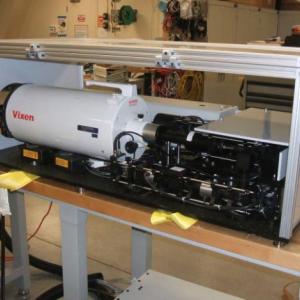Broadband CO2 Lidar - 1.5 micron version
The Broadband CO2 lidar instrument operates on the principle of differential absorption. This means that the instrument examines the transmission of light through the atmosphere at two or more different wavelengths that are absorbed differently by the species one wishes to measure. There are then two principal elements involved in the measurement—the source and the detector. Passive systems use natural processes such as sunlight or atmospheric emission to generate a number of different wavelengths which are separated for analysis by the detector. Most laser based systems (eg. DIAL lidars) use two or more different laser sources to provide different wavelengths. These systems then might use the same detector for the multiple wavelengths using time separation or modulation to differentiate the signals coming from the different lasers.
This system, however, uses as a detector that can differentiate wavelengths just as conventional passive sensors. The detector was originally developed as the Fabry-Perot passive sensor measuring CO2 using reflected sunlight. Our new approach is made possible by the emergence of a new type of source—the superluminescent light emitting diode (SLED). The SLED has the same high brightness and collimation characteristics as a conventional laser but it emits light over a broader range of wavelengths than conventional lasers. This permits a differential absorption measurement employing a single source with wavelength differentiation in the detector.

